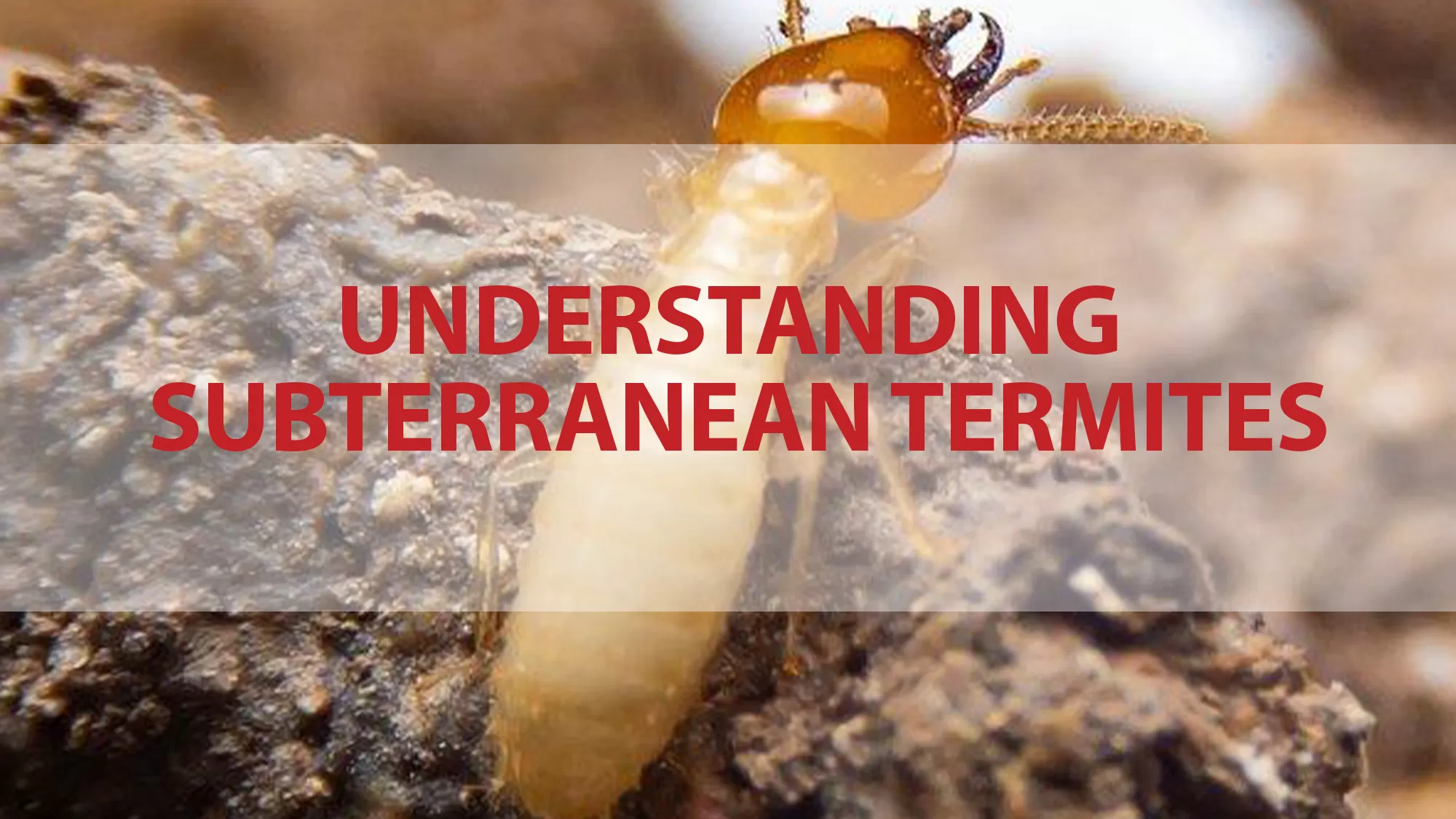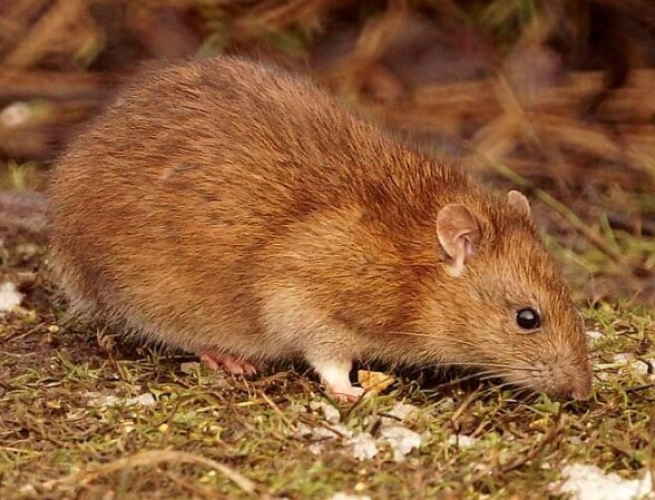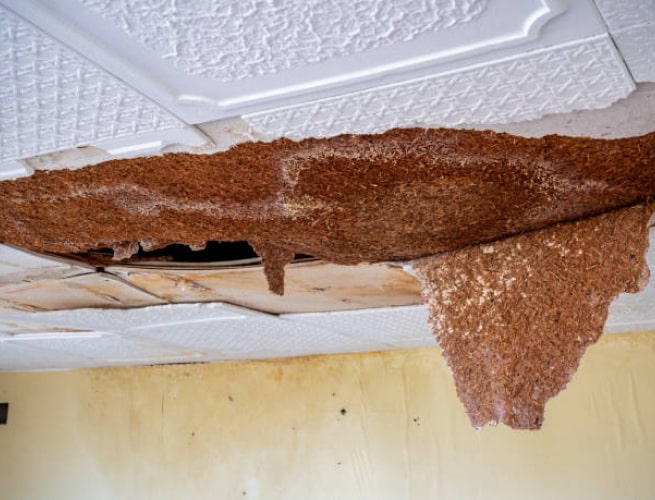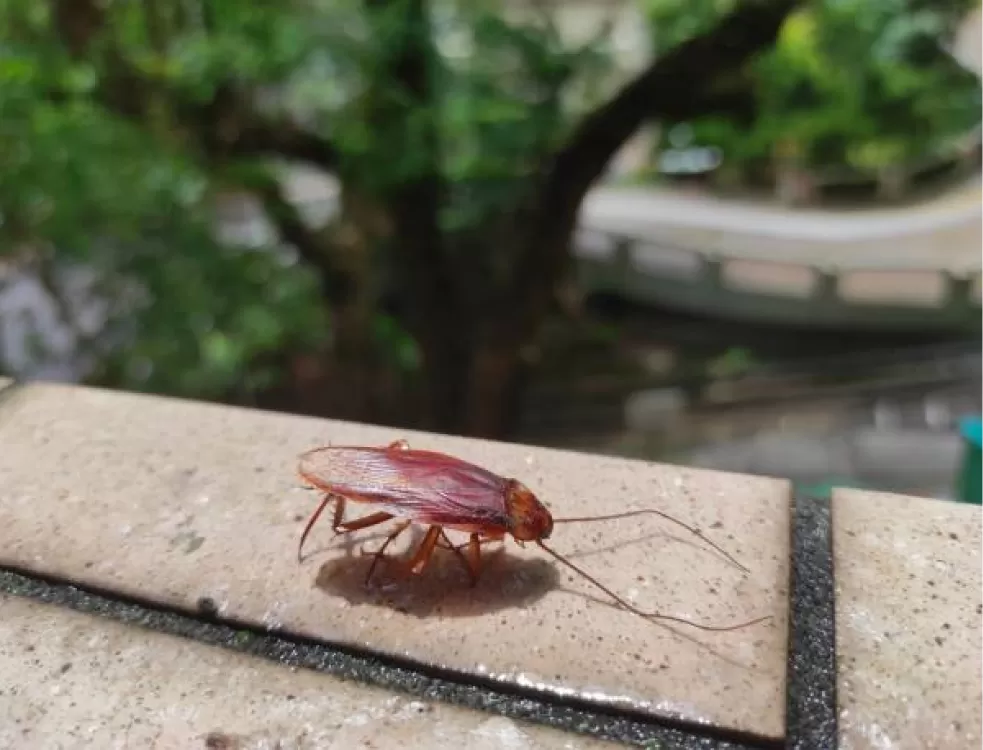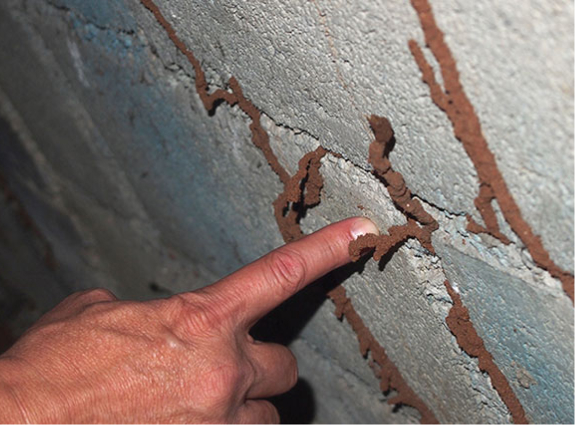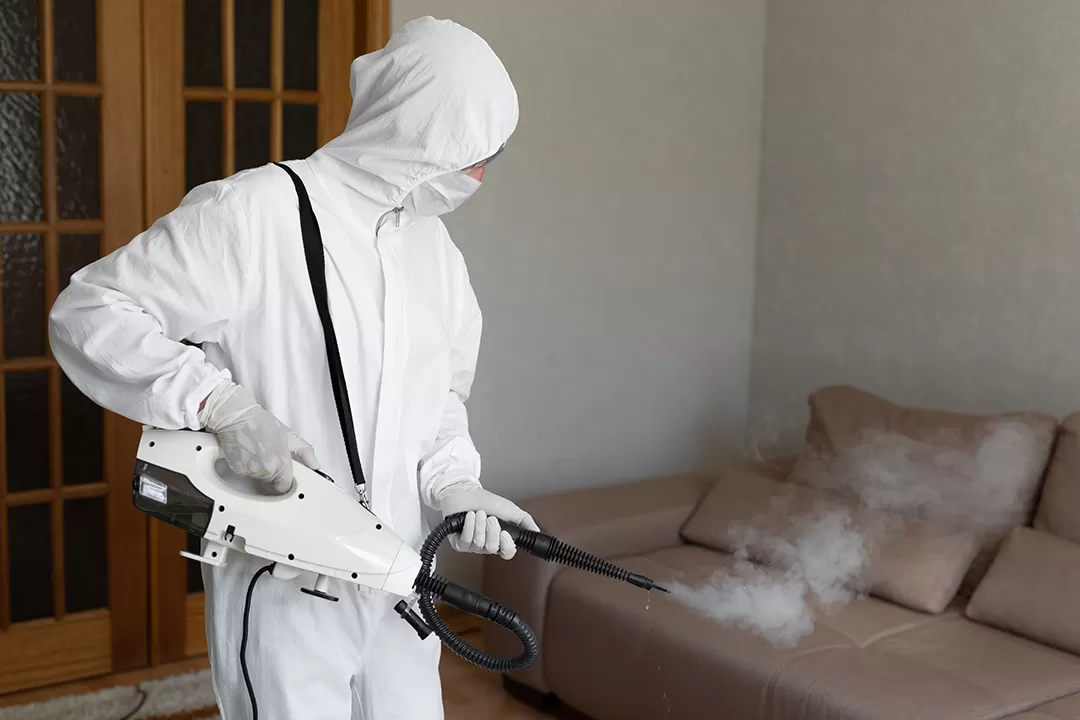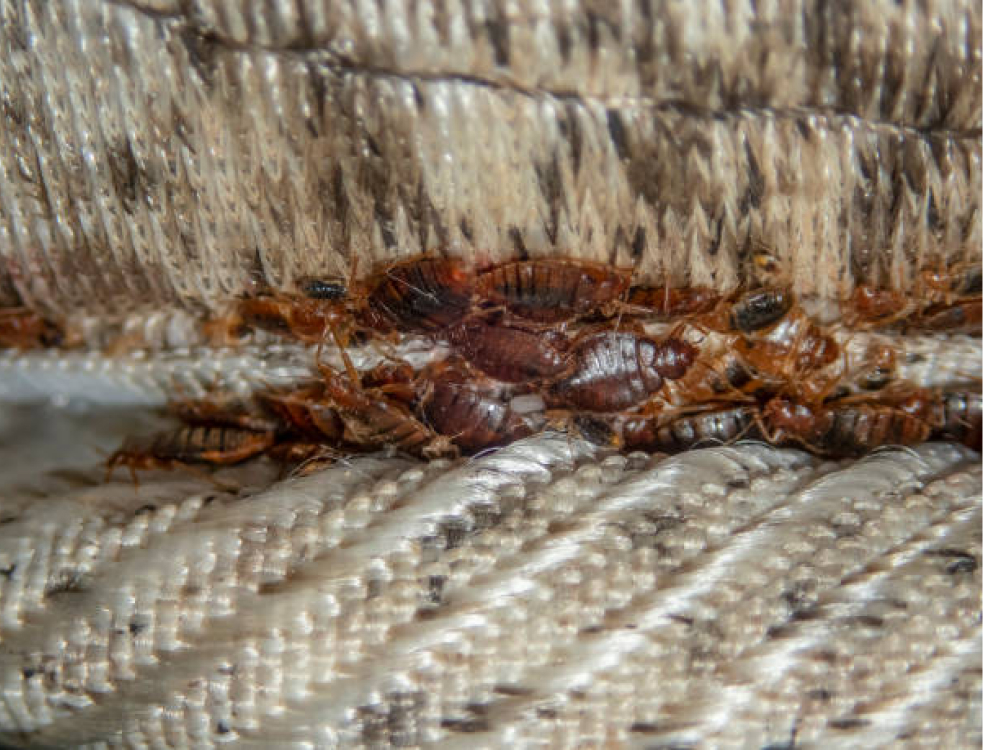Termites, often referred to as “silent destroyers,” are a group of insects that can wreak havoc on homes and structures without any immediate signs of their presence. Among the various species of termites, the subterranean termite is particularly notorious for its ability to cause extensive damage beneath the surface.
In this blog, we will delve into the world of subterranean termites, exploring their biology, behaviour, and potential threats they pose to your property.
The Biology of Subterranean Termite
Species Varieties:
Subterranean termites belong to the insect order Isoptera, and there are several species within this category. Some of the most common subterranean termite species include Eastern subterranean termites, Western subterranean termites, and Formosan subterranean termites. The specific species can vary based on geographic location.
Appearance:
Subterranean termites are typically small, ranging from 1/8 to 1/4 inch in length, with soft, pale bodies. They have straight antennae and a uniform width of their body, unlike ants, which have constricted waists.
Colony Structure:
Subterranean termites live in colonies that can range in size from a few thousand individuals to several million. Each colony consists of different castes, including workers, soldiers, and reproductives.
Life Cycle:
Subterranean termites undergo a complex life cycle that includes egg, nymph, and adult stages. Reproductive termites, known as alates or swarmers, emerge from mature colonies to mate and establish new colonies.
Castes:
Within a subterranean termite colony, there are different castes, each with specific roles. These castes include workers, soldiers, and reproductives. Workers are responsible for gathering food, maintaining the colony, and caring for the young. Soldiers protect the colony from threats, primarily ants and other predators. Reproductives are responsible for expanding the colony through swarming and establishing new nests.
Behaviour and Feeding Habits
The behaviour and feeding habits of subterranean termites are fascinating and, unfortunately, concerning for homeowners and property managers. These termites are well adapted to their underground lifestyle, and their feeding habits can lead to significant structural damage if left unchecked. Here’s a closer look at the behaviour and feeding habits of subterranean termites:
Behaviour:
Subterranean Lifestyle:
As their name suggests, subterranean termites live primarily underground, where they establish colonies. These colonies are connected to the soil and typically remain hidden from view.
Colony Structure:
Subterranean termite colonies consist of various castes, each with specific roles. These castes include workers, soldiers, and reproductives.
- Workers: Workers make up the majority of the colony and are responsible for several crucial tasks, including foraging for food, constructing tunnels and galleries, feeding other castes, and caring for the young.
- Soldiers: Soldiers are responsible for defending the colony against potential threats, primarily ants and other predators. They have large, powerful jaws and specialised heads for combat.
- Reproductives: Reproductive termites, known as alates, are responsible for expanding the colony by establishing new nests. They are the only termites with functional wings.
Tunnelling:
Subterranean termites build intricate tunnel systems in the soil, allowing them to travel to and from their food source without exposure to open air. These tunnels can extend for several feet and may even lead to structural wood in buildings.
Feeding Habits:
Cellulose Consumption:
Subterranean termites are cellulose feeders, meaning their primary food source is materials rich in cellulose. This includes wood, plant debris, paper, and cardboard. They can also feed on materials containing cellulose, such as books and insulation.
Foraging:
Worker termites are responsible for foraging for food. They locate potential food sources by following chemical trails left by other workers. Once a food source is found, they break it down into smaller particles and carry it back to the colony to share with other members.
Moisture Dependency:
Subterranean termites are highly dependent on moisture for survival. To maintain the necessary humidity within their colonies and tunnels, they often construct mud tubes and seek out damp environments. This moisture requirement can lead them to areas with water leaks, damaged plumbing, or damp soil.
Hidden Damage:
One of the most concerning aspects of subterranean termite feeding habits is their ability to cause extensive damage without immediate detection. They feed from the inside out, hollowing out wooden structures, leaving only a thin outer layer intact. This can make infestations challenging to spot until significant damage has occurred.
Detecting Subterranean Termites
One of the biggest challenges with subterranean termites is their ability to remain hidden until significant damage is done. However, there are some signs of termites and detection methods you can use:
Mud Tubes:
- Subterranean termites build mud tubes to maintain the necessary humidity and protect themselves while travelling between their nest and food sources. These tubes are typically brown and look like small tunnels.
- Check the foundation, walls, wooden structures, and any exposed soil for the presence of mud tubes. Pay close attention to areas where wood touches the ground.
Wood Damage:
- Subterranean termites feed on cellulose-rich materials, primarily wood. They consume wood from the inside out, leaving a thin layer of wood on the surface.
- Inspect wooden structures, beams, and furniture for signs of termite damage. Tap on the wood with a screwdriver or similar tool and listen for a hollow or papery sound. Infested wood may also appear blistered or sagging.
Swarmers (Alates):
- During the termite mating season, subterranean termites release winged reproductive termites known as alates or swarmers.
- If you notice a sudden emergence of flying insects, particularly around windows, doors, or lights, it may indicate a termite swarm. Collect a few specimens for identification.
Discarded Wings:
- After a termite swarm, you may find discarded wings near windows, doors, or light fixtures. Termite wings are typically uniform in size, have fine veins, and look like small, papery scales.
Hollowed or Damaged Wood:
- Subterranean termites consume wood from the inside, leaving behind a thin outer layer. Gently tap or probe suspected infested wood with a screwdriver or knife to check for hollow-sounding or damaged areas.
Cracked Paint or Blistered Surfaces:
- Termites can cause paint to crack or surfaces to blister due to the moisture they produce while feeding.
Professional Inspection:
- Regular professional termite inspections by a licensed pest control expert are one of the most reliable methods for detecting subterranean termites.
- Pest control professionals use specialised tools and techniques, such as moisture meters, acoustic devices, and fibre optic scopes, to inspect hidden areas within your home for termite activity.
Termite Bait Stations:
- Installing termite bait stations around your property can help detect termite activity. These stations contain cellulose bait that attracts termites.
- Regularly inspect the bait stations for signs of termite presence, such as the presence of termites or damage to the bait.
Check for Moisture Issues:
- Subterranean termites require moisture to thrive. Inspect your property for signs of water leaks, damp wood, or areas with high humidity, as these conditions can attract termites.
Prevention Measures
Preventing subterranean termites is crucial to safeguarding your property. Here are some preventive measures you can take:
Reduce Moisture:
Subterranean termites are attracted to moisture. Address any water leaks, drainage issues, or high-humidity areas around your property. Proper moisture control is a key preventive measure.
Keep Wood Away from Soil:
Termites often gain access to structures through direct soil contact. Maintain a gap of at least 6 inches between wooden structures (like decks and fence posts) and the ground. Use concrete or metal barriers to separate wood from soil.
Remove Wood Debris:
Eliminate dead trees, tree stumps, and wood debris from your property, as they can serve as termite food sources and nesting sites.
Termite-Resistant Materials:
Consider using termite-resistant building materials during construction or renovation. Examples of such materials are pressure-treated wood, termite-resistant sheathing, and concrete blocks.
Physical Barriers:
Install physical barriers like metal mesh, termite shields, or non-repellent termiticides during construction to deter termite entry. These create obstacles that termites cannot easily bypass.
Regular Inspections:
Schedule regular termite inspections by a licensed pest control professional. Professionals are trained to detect early signs of termite infestations, even before visible damage occurs.
Termite Baiting Systems:
Install termite bait stations around your property. These stations are monitored regularly by professionals who can apply termiticides when termite activity is detected.
Soil Treatment with Termiticides:
Consider treating the soil around your property with termiticides. These chemicals create a barrier that repels or kills termites upon contact. Consult a professional for proper application.
Treating Subterranean Termites
Professional Assessment:
If you suspect or confirm a subterranean termite infestation, contact a licensed pest control expert immediately. They will conduct a thorough inspection to assess the extent of the infestation.
Chemical Treatments:
Pest control professionals may recommend chemical treatments to eliminate termite colonies. This can include applying liquid termiticides to the soil around the structure or using foam or dust formulations directly on infested areas.
Termite Baiting:
Termite baiting systems can be employed to eliminate termite colonies. Bait stations with cellulose bait are placed strategically around the property. Termites feed on the bait and bring it back to the colony, eventually leading to its elimination.
Localised Treatment:
In cases of minor infestations or small, localised termite colonies, targeted treatments with localised termiticides or foams may be effective.
Wood Replacement:
If structural wood has been extensively damaged, it may need to be replaced. Remove and replace damaged wood to prevent further infestation.
Monitoring:
Continue to monitor your property for termite activity even after treatment. Regular inspections and maintenance are essential to prevent re-infestation.
Preventive Measures:
Implement ongoing preventive measures, including moisture control, wood maintenance, and regular inspections, to ensure long-term protection against future termite infestations.
Conclusion
Understanding subterranean termites is essential for protecting your property from their destructive potential. Their secretive nature makes them formidable adversaries, but with vigilance, preventive measures, and professional assistance, you can safeguard your home and mitigate the risks associated with these silent invaders.
Remember, early detection and proactive treatment are key to minimising termite damage and ensuring the longevity of your structures.

